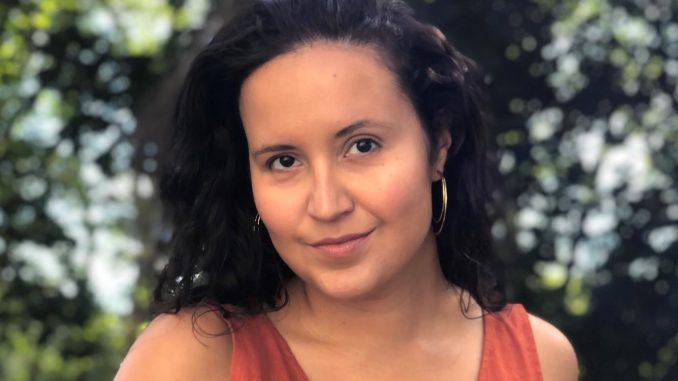
By Michela Arlia
Christine Kandic Torres (‘08) is the latest Brooklyn College alum to break through in the literary world. Her first novel “The Girls in Queens” published in June, telling the story of a strong friendship between two Latinas in the borough.
The two protagonists, Kelly and Brisma, have their friendship challenged when a mutual friend is accused of sexual assualt.
“Each friend is forced to decide not only what justice means to each of them, but who deserves it—and whether their shared history can sustain their future,” Kandic Torres told the Vanguard.
Kandic Torres is no stranger to the field of writing. Throughout her career, she has had multiple short stories and personal essays published in journals including “Catapult,” “Fractured Lit,” “Newtown Literary,” “The Sonder Review,” and many more.
Her start to writing began at a young age, becoming her outlet to manage anxiety growing up. Being an avid reader also allowed her to access an abundance of literary creativity
“I’ve always loved creating stories in any art form,” she said. “I was also a kid who experienced a great deal of anxiety, and without much other support, I discovered early on that writing gave me the power and control to be heard and understood in new ways.”
While becoming the author she is today, Kandic Torres was intrigued by BC’s creative writing program, but along the way she stumbled across the psychology department, ultimately earning her degree in the field.
A proud product of the NYC public school system from kindergarten through undergrad, she says her love for writing never fled amongst all her psychology courses.
“I did take wonderful writing and literature courses there [at BC], though, which inspired and encouraged me to continue developing my craft,” she noted. “I have very fond memories of writing in the library and the coffee shop in between classes.”
Hailing from Queens herself, with Puerto Rican and Croatian roots, Kandic Torres reflects her views of the world she lives in through her stories, especially in the novel.
Her background inspired much of the book, including its blended use of Spanish and English, or “Spanglish.” Characters in the book are also of Latinx and European mixed race.
“I think the kids in ‘The Girls in Queens’ all feel like an outsider in different ways, and to different degrees; I am always an outsider to somebody, always and never enough of anything—except Queens, except New York,” said Kandic Torres.
She further described how her heritage has influenced much of her work in writing and creating characters that hit close to home.
“I think that’s one of the more pronounced ways my heritage has influenced my work, and this novel; these first and second generation immigrant characters are like me, pulled between various cultures and countries of their families of origin, but the one true constant is the urban multicultural community that raised them,” she wrote. “In some ways, it’s their truest sense of a ‘homeland.’”
The initial inspiration for this novel was not one you might hear everyday, as Kandic Torres explains how two particular events in her life brought this story of two Queens girls to life. After the Mets played in the World Series in 2015, she recalled the last playoffs the Mets had joined in 2006, with its then “heavily Latinx team.” Her attention was also on the case of Brock Turner, a former Stanford student who was convicted of sexual assault for raping an unconsious woman behind a dumpster. Eventually, the two seemingly polarizing ideas meshed to form her first novel’s innerworkings.
“[…] My interest and focus zeroed in on how and why women—especially women who’ve survived violence themselves—go on to protect and defend other abusers in their lives. I realized then that I had a novel-length story that married these two preoccupations beginning to take shape,” said Kandic Torres.
Kandic Torres’ life both personally and culturally have blended to create a story of representation and heritage. For aspiring writers who she had once stood in the shoes of at one point in her life, she puts a message out for them: that rejection can and will happen, and that it is all a part of the process.
“The writing is what will bring meaning and connection and community to your life…Writing sometimes feels like a lifelong commitment to the practice of revision,” she said. “So keep going, keep revising, keep submitting, if publication is what you want.”
